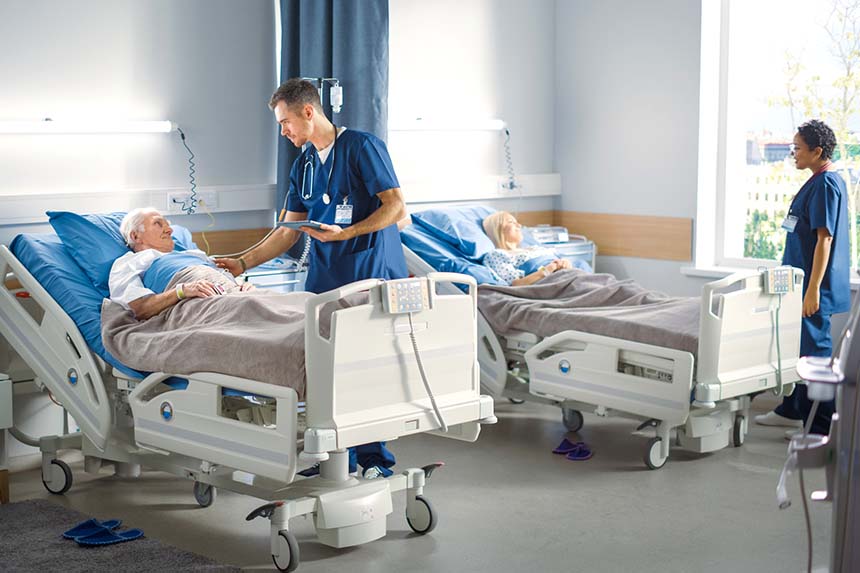Accelerated by advancements in cancer treatments and a growing emphasis on personalized and precision medicine, specialty pharmacy represents a rapidly growing sector within the healthcare industry. In fact, the market is projected to grow to $500 billion by the end of this year—up from $200 billion in total U.S. specialty drug spending in 2017.
Industry growth of this magnitude creates challenges for those looking to understand and penetrate the market. It can be difficult, after all, to maintain updated information about high-priority drug therapy areas or facility affiliations in a market that’s constantly changing.
Definitive Healthcare tracks just over 3,200 active specialty pharmacies across the United States from nearly 440 different pharmacy and health system networks. In this blog, we’ll be sharing some key insights about the specialty pharmacy market, including top therapy areas and facility regional distribution. But first: what exactly are specialty pharmaceuticals?
What are specialty pharmaceuticals?
Specialty pharmaceuticals, or specialty drugs, are a relatively new class of drug therapies classified as “high-cost, high-complexity” pharmaceuticals. Specialty drugs are quite often biologics—meaning that they’re produced from living organisms—and are primarily used to treat cancers or other complex, chronic, or rare conditions.
For Medicare Part D beneficiaries, specialty tier drugs are defined as any costing more than $670 per month. According to the Academy of Managed Care Pharmacy (AMCP), however, specialty pharmaceuticals can sometimes range anywhere from $10,000 to $7 million in annual patient costs.
Due to the high value and non-traditional nature of these drugs, they’re dispensed almost exclusively by specialty pharmacies. In addition to handling, storing, and distributing specialty pharmaceuticals, these facilities also coordinate certain aspects of patient care and disease management.
Top 10 therapy areas in specialty pharmacy
As mentioned, specialty pharmacies dispense medications—both self-administered and provider-administered—for the treatment of complex, chronic, or rare diseases. There are as many as 35 or more different conditions serviced by specialty pharmacies, ranging from cystic fibrosis and psoriasis to infertility and heavy metal toxicity.
Despite the complex nature of these treatments, many specialty pharmacies actually cater to multiple therapy areas or disease states. According to Definitive Healthcare data, approximately 20 percent of the facilities that we track cover more than one therapy area.
Most common therapy areas by number of specialty pharmacies

Fig 2 Bar chart represents the top therapy areas in specialty pharmacy by number of specialty pharmacies, using Definitive Healthcare proprietary research data as of February 2020. This chart is featured on Definitive Healthcare’s Expert Premium Content platform.
Oncology is the most common therapy area targeted by specialty drugs, with a total of 431 specialty pharmacies reporting this as their target disease state. Blood disorders, HIV/AIDS, arthritis, and multiple sclerosis (MS) are also among the top five most common therapy areas.
Specialty pharmacies most common in eastern U.S.
Though specialty pharmacies are dispersed across all 50 states and Puerto Rico, these facilities are most highly concentrated among the eastern part of the United States. Of the 3,205 specialty pharmacies that Definitive Healthcare tracks, more than 50 percent of them are located in either the northeast or southeast regions.
Map of specialty pharmacies across the United States

Fig 1 Map represents distribution of specialty pharmacies across the United States, using Definitive Healthcare proprietary research data as of February 2020. This map is featured on Definitive Healthcare’s Expert Premium Content platform.
The southeast reports the highest volumes of specialty pharmacies, with a total of 979 active facilities as of February this year. The southwest, in contrast, has the lowest number of reported specialty pharmacies—with only 375 active facilities throughout the region.
Due to the often perishable nature of specialty drugs and the complex conditions of the patients they’re intended for, these pharmacies are primarily located in and around urban areas as opposed to rural regions. For this same reason, specialty pharmacies are also more likely to be near to or even directly affiliated with large medical centers, cancer research facilities, or teaching hospitals.
Learn more
To learn more about specialty pharmacy and the issues most impacting this industry, take a look at our Top Trends in Specialty Pharmacy blog. We’ll walk you through the three trends most impacting this sector, including accreditation, industry consolidation, and the push for innovation.
Looking for more information about the specialty pharmaceutical market, and how to sell into this sector? Catch our on-demand webinar called 4 Data-Driven Insights to Connect Your Oncology Treatments to Patients.
Vice President of Professional Services at Definitive Healthcare, Todd Bellemare, examines the market patterns and insights most essential to your oncology treatment commercialization strategies.





